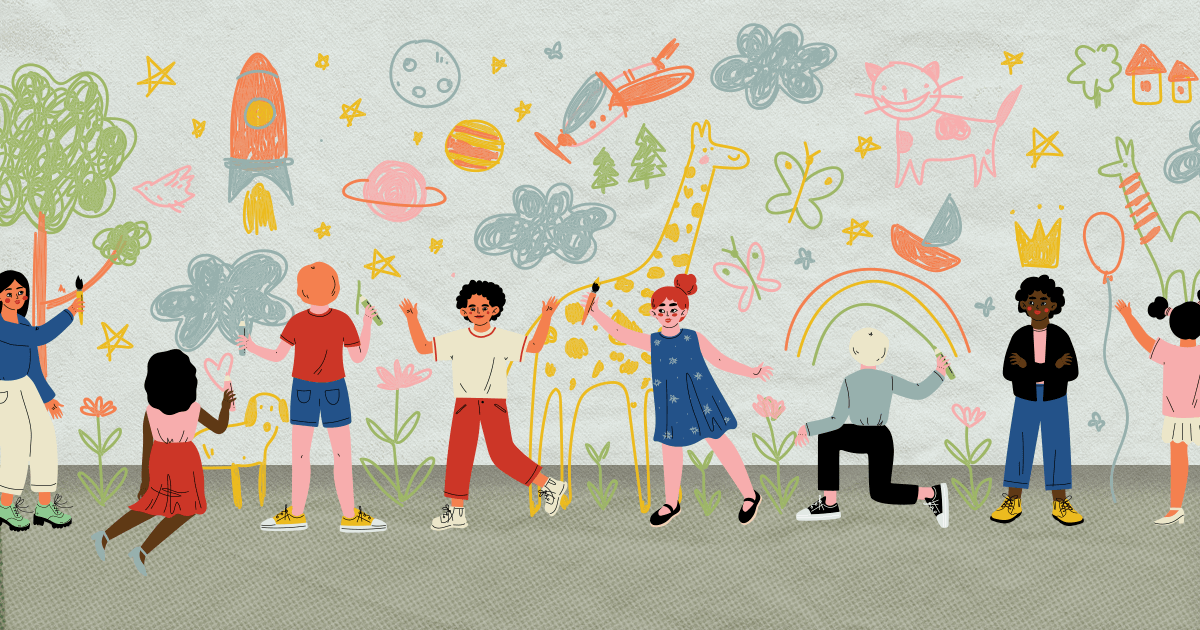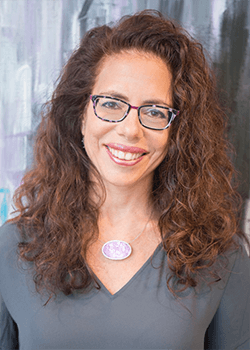
I recently found an old report card. Maybe I should say ancient — it was from the second grade!
It would have been funny — the clear statements of my abilities juxtaposed with my distractibility — except that the teacher focused on changing my behavior rather than igniting my intellect.
This is the song often sung about gifted and twice-exceptional (2e) learners. Twice exceptional refers to people identified as gifted with a concurrent learning difference or disability. I know all too well the tendency for grownups to feel as though they must wait for behavior to “get under control” before they can challenge or enrich learners. I know this from the countless client individualized education plans, teacher emails, and neuropsychological reports I’ve read, as well as from conversations and consultations with hundreds of parent clients.
The first-quarter comments in second grade for me were juxtaposed like this:
Julie reads above grade level. Julie needs to challenge her energies and spend more time concentrating on her studies.
There are no suggestions to fan the flames of my reading passion or engage my “energies” to develop talent or provide a challenge. The sheer lack of elaboration on my strength is fascinating to me. It felt like it was an “obviously Julie is smart” moment, “we don’t have to address that — it’s the behavior that is the problem.” What a beautiful way to encapsulate the gifted and 2e learner’s experience — where strengths are ignored or overlooked to focus on deficits and behavior. When struggles are magnified and prioritized over strengths, we plant seeds of doubt about the very thing that defines the gifted child’s essence.
The following critique turns gifted characteristics on their head, as though having unique and strong opinions about topics is a bad thing.
She distracts others. Can be very out-spoken and strong willed. She has the ability to do better. (sic)
I actually laughed out loud at that one. Guess what, second-grade teacher? I haven’t changed!
The purpose of this article is to share why it’s so important to celebrate and encourage gifted tendencies rather than squelch our gifted and 2e kids’ essence because they are difficult to harness. Can you imagine if I took my teacher’s advice and stopped pushing back or challenging ideas? I certainly would not have become a lawyer, let alone have created a business to challenge and reframe gifted and 2e parenting and education. What I do all day long is push back against systems and teach advocacy to positively reframe and lift up the 2e person’s experience.
The question is, “Why would you want to?” Here are two steps for successfully engaging and enjoying your energetic, outspoken, strong-willed, seemingly distractible learner:
1. Spend time asking questions about what makes them tick and what ticks them off. When you give space to understand what is important to them and what is difficult for them, you embark upon a path of trust and understanding. You encourage engagement.
2. Allow the student or child an attempt at problem-solving. Set up the problem acknowledging the needs and perspective he’s shared, then share your point of view. Ask how to solve the challenge and take account of each person’s perspective in creating a space conducive to learning or living, so everyone feels safe and fulfilled.
So often adults try to meld children into someone convenient for them and their adult situation. I’m certain it would have been easier for my second-grade teacher had I conformed. But I ask myself, why would a teacher — who is there to teach — ever want someone to sit and face forward? That child is not learning; that child is ingesting. Gifted and 2e kids, they don’t do that. They devour, and as they chew on ideas, they need to share, push back, and look at the information from multiple angles. This is what is known as critical thinking. This is how learning happens.
Ancient rabbis perfected the art of argument. They took one book, the Torah, and they grappled with it from all angles. The more questions and pushback, the better. There is no knowing — until there is debate, critique, conversation, and even quarreling. This should be the paradigm for teaching. It’s how learning sticks. I’m sure teachers are wondering, “But how do you control a class like that?” Gifted and 2e learners are great problem-solvers. Ask them! At the beginning of class, set up the rules. Let them know how you want the class to run and ask them what needs to happen (or not happen) to keep the class under control and relevant. Ask what happens when someone departs from the rules.
The same thing goes for gifted and 2e kids in the home. Rather than shutting them down, or shutting them up, lay down rules. Recognize the greatness that is their critical thinking, their questioning, their refusal to take someone at their word. Then give them perspective. Let them know how it feels when they never do anything you ask without a fight. Put it back on them and ask, “How can we make this better for both of us?” Let them solve your problem.
Often teachers and parents communicate black-and-white expectations to children whom they wish were more flexible. They set up behavior plans, charts, incentives, and gimmicks to get kids to do what they want — when what gifted and 2e kids deserve is respect for their “energy” and intellect. When teachers and parents take the time to applaud gifted and 2e kids’ natural tendencies, to explain the broader viewpoint of how certain intense behaviors affect others, they gain the learner’s trust. This, in turn, opens up discussion for how to make situations better for all parties. The alternative, critiquing, expecting the worst and ignoring underlying reasons for behaviors, serves to induce anxiety, underachievement, and school- or task-refusal.
As a student, because I had a high drive and motivation to please, I ended up partially adapting to my second-grade teacher’s rules. In fact, the final comments on my report card that year demonstrated that I could grin and bear it, doing meaningless and rote work. I’m happy to say, however, that I maintained my gifted gumption.
Julie has made tremendous strides in completing her daily assignments. She does however need to channel her energies. Has a tendency to be very outspoken. (sic)
Had she asked, I’m sure I would have described better ways to show my knowledge based on my learning. In a similar vein, a client’s 7-year-old son came home from school one day and shared that they were discussing how cars were made. They watched a movie and learned the steps of the assembly line. Throwing his hands up in frustration, this child asked, “Wouldn’t it be more interesting if the teacher asked us to think about what steps it takes to make cars, and in what order and then allowed us to share our thoughts instead of just telling us?”
Just taking the time to hear the learner’s thoughts allows them to express their true self and thereby increases resilience when they have something difficult to face.

Julie passionately guides parents of gifted and distractible children, mentors 2e adults, trains educators, and advises professionals on how to bring out the best and raise self-confidence in their 2e students and clients.
She serves as Secretary to the Maryland Superintendent’s Gifted and Talented Advisory Council, an adviser for the Masters of Education Program for the Bridges Graduate School of Cognitive Diversity, the Maryland liaison for Supporting the Emotional Needs of the Gifted, a Committee member for the National Association for Gifted Children, and an adviser to “The G Word” feature documentary currently in production.
A frequent speaker and prolific writer, Julie is also the mother of three twice exceptional children who keep her on her toes and uproariously laughing.